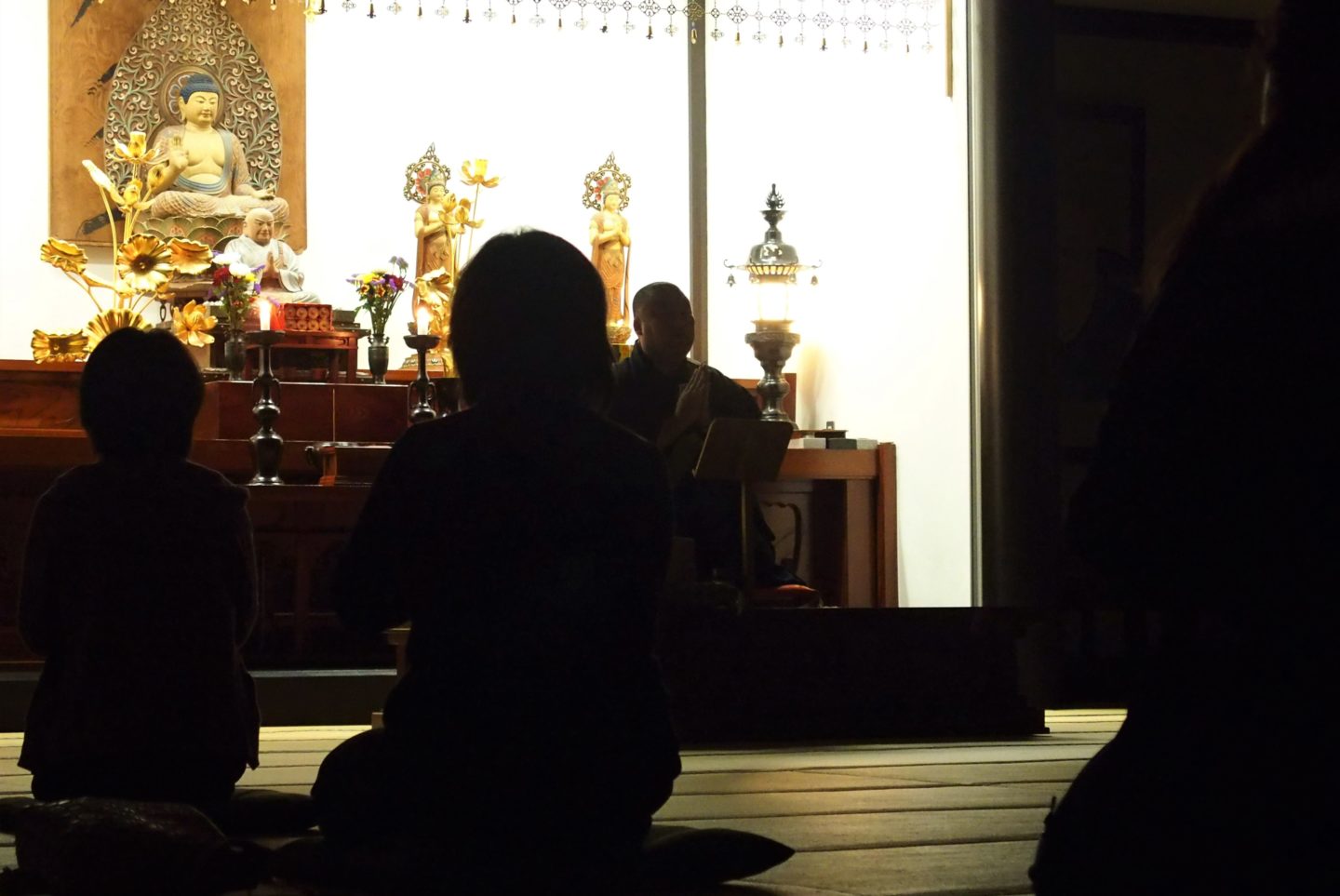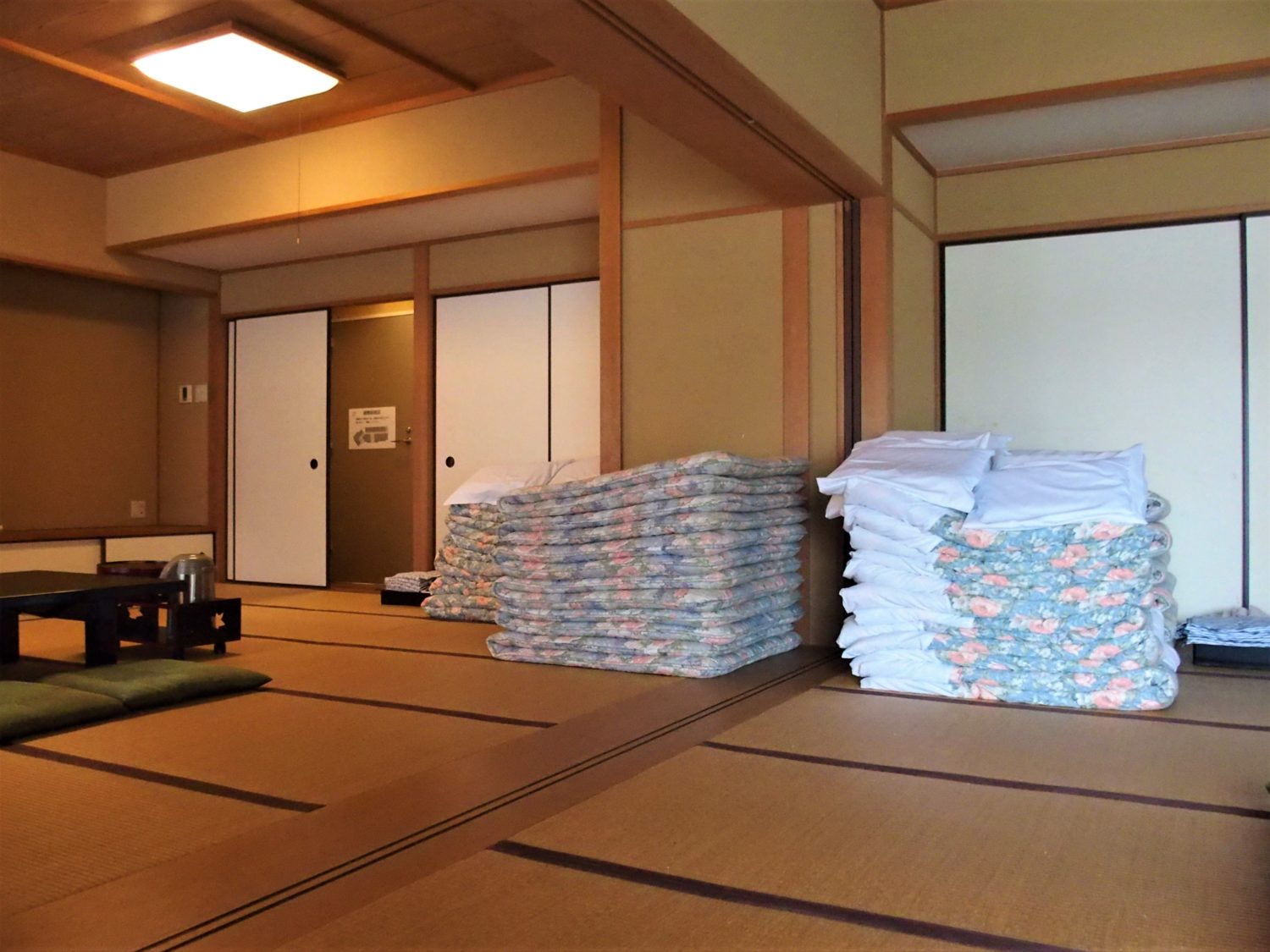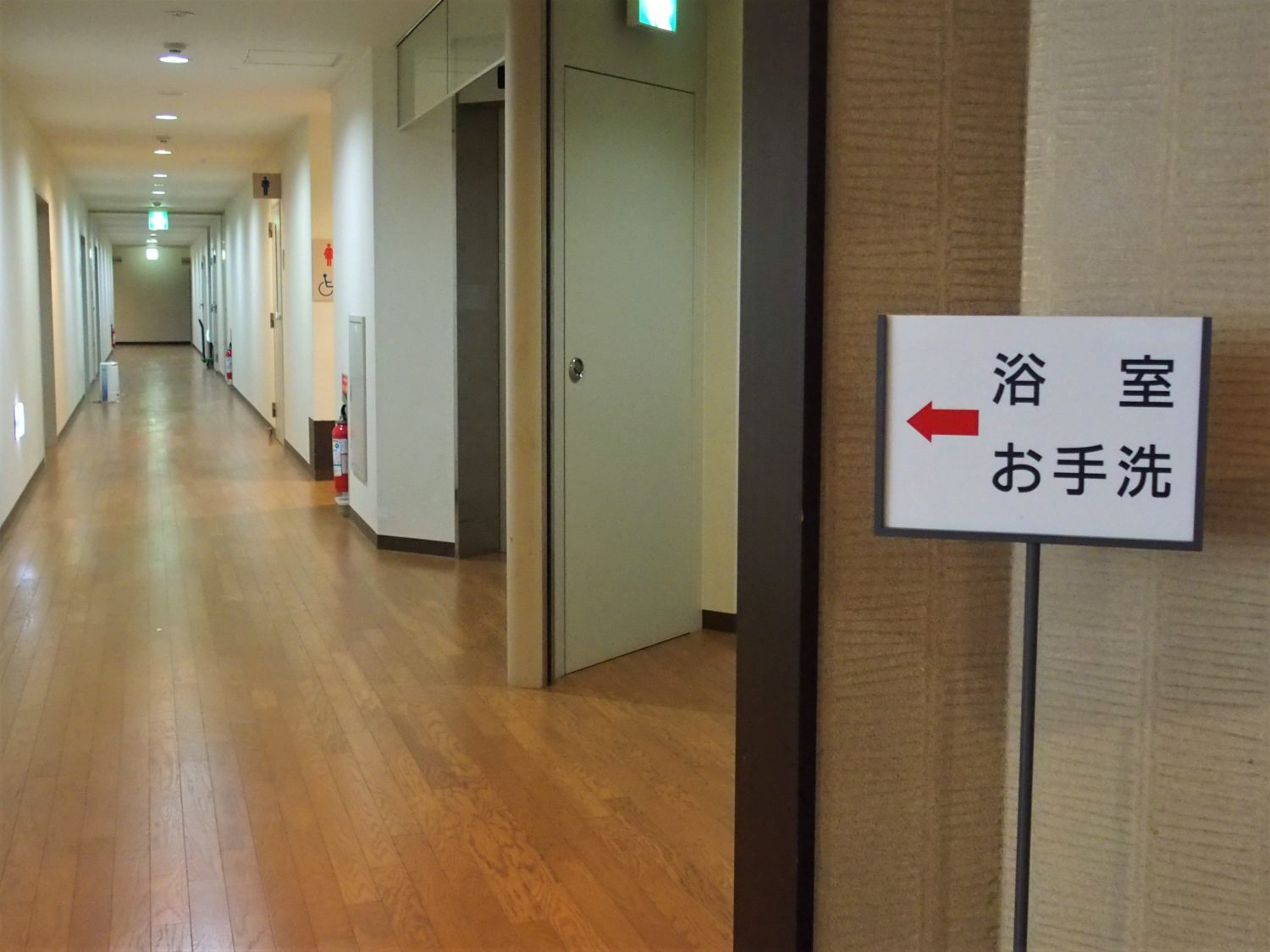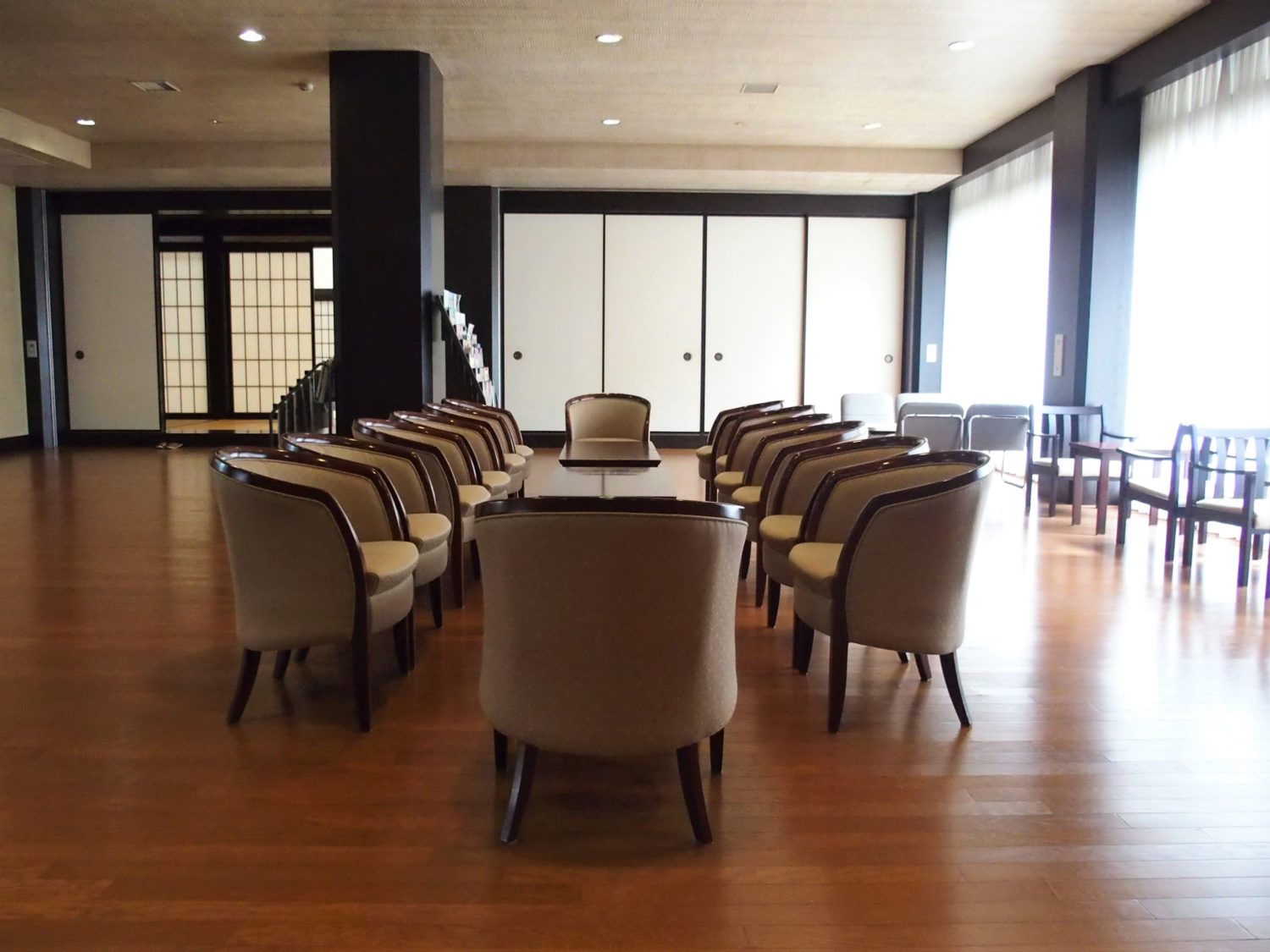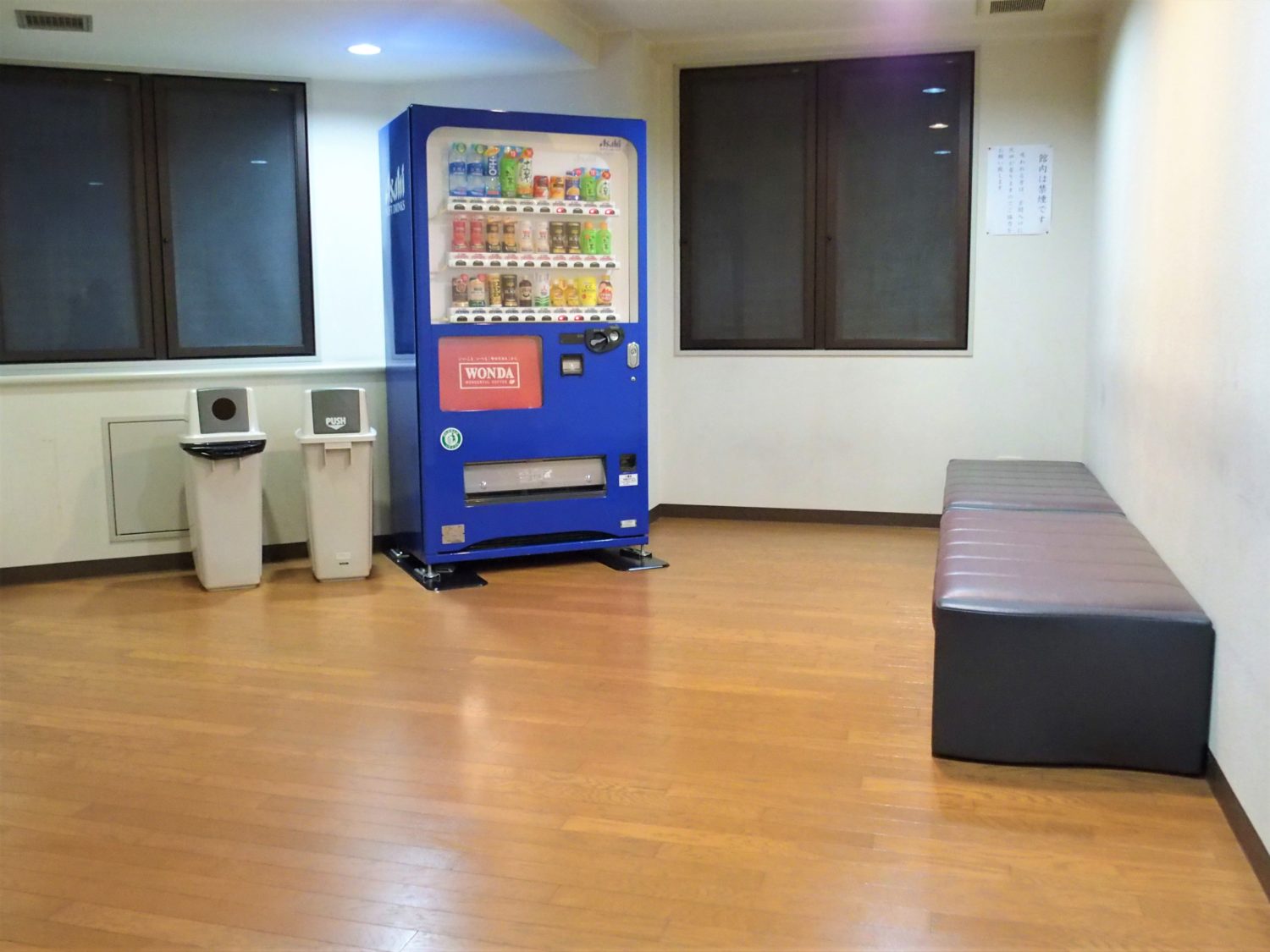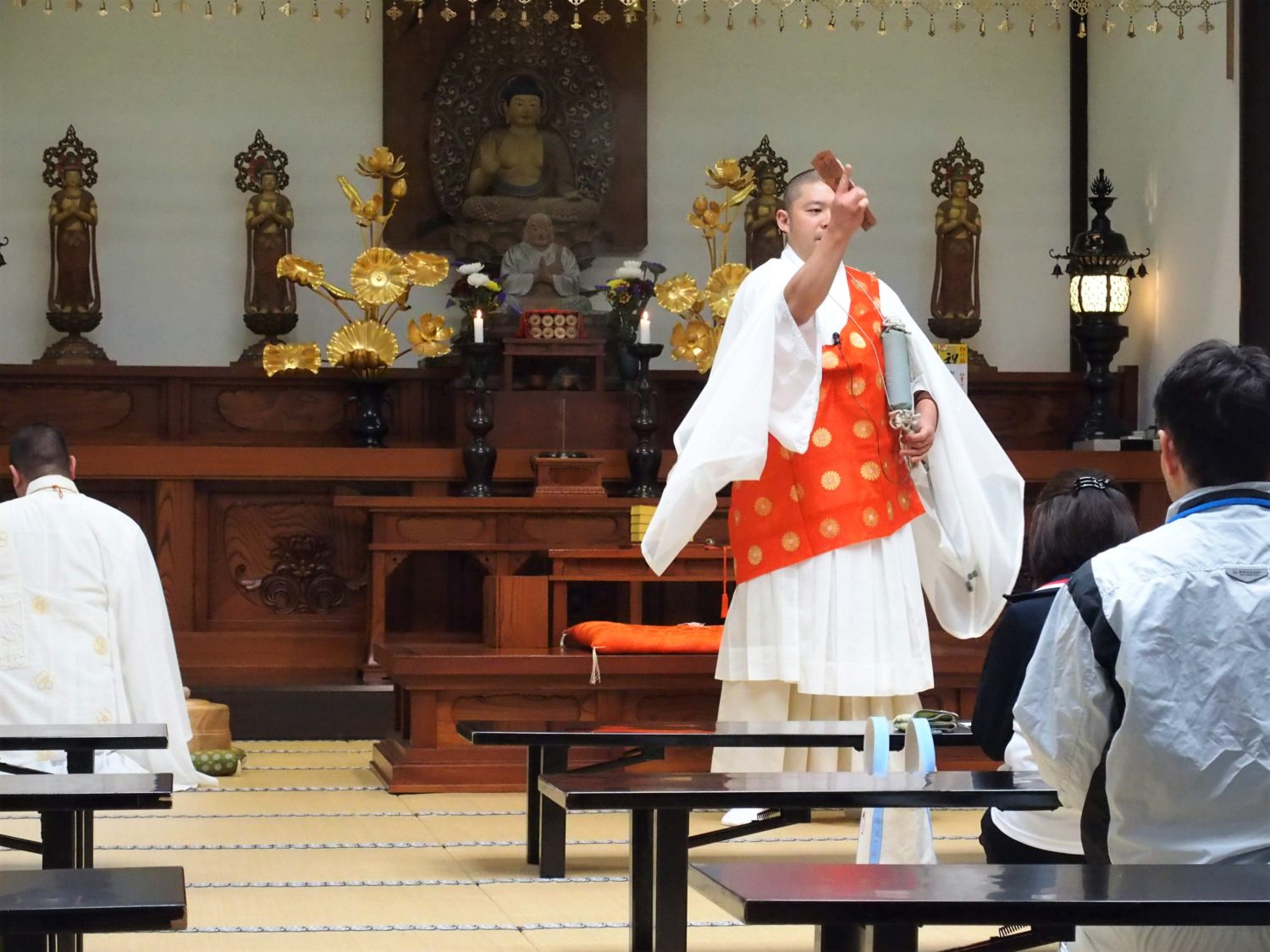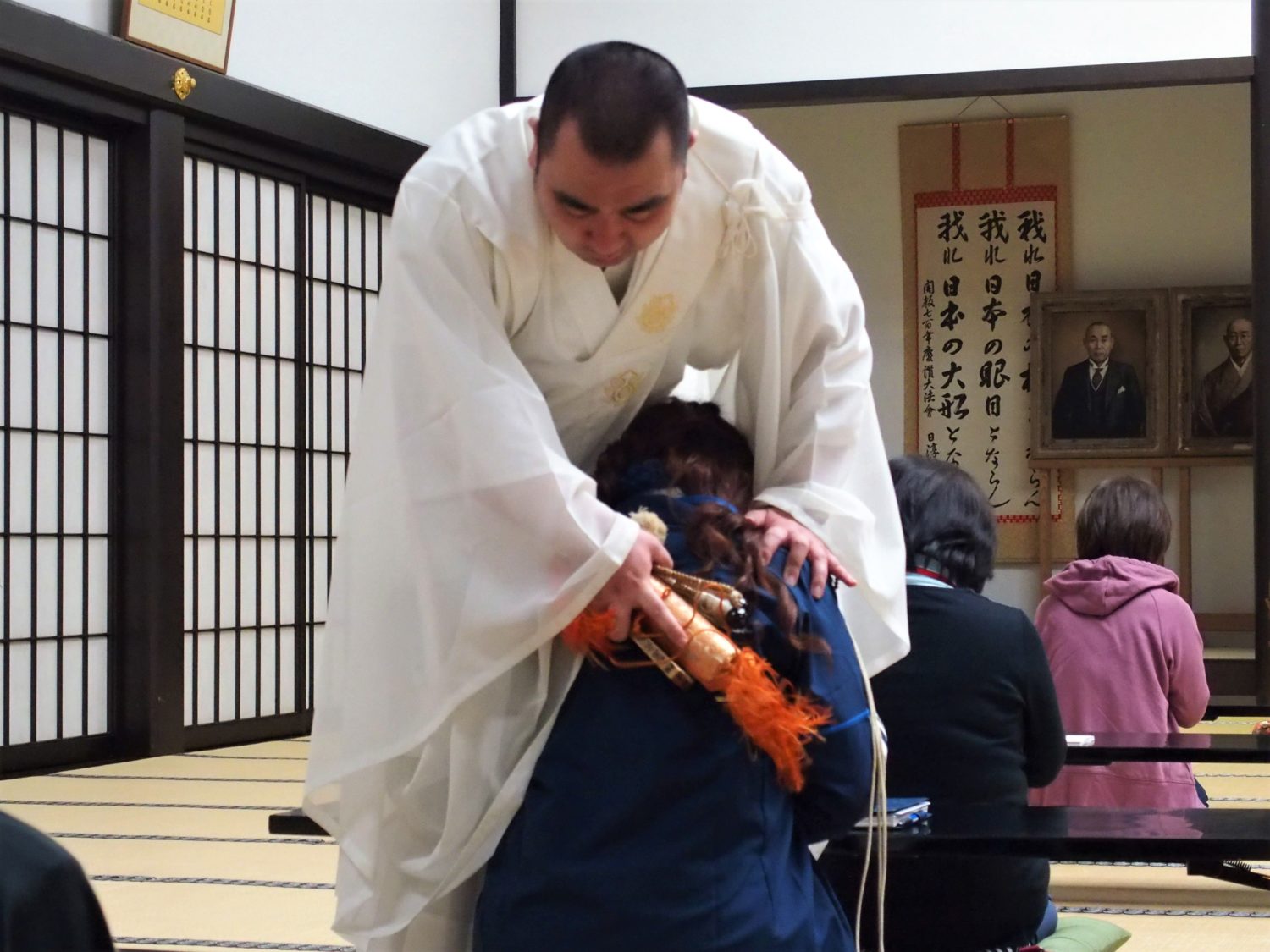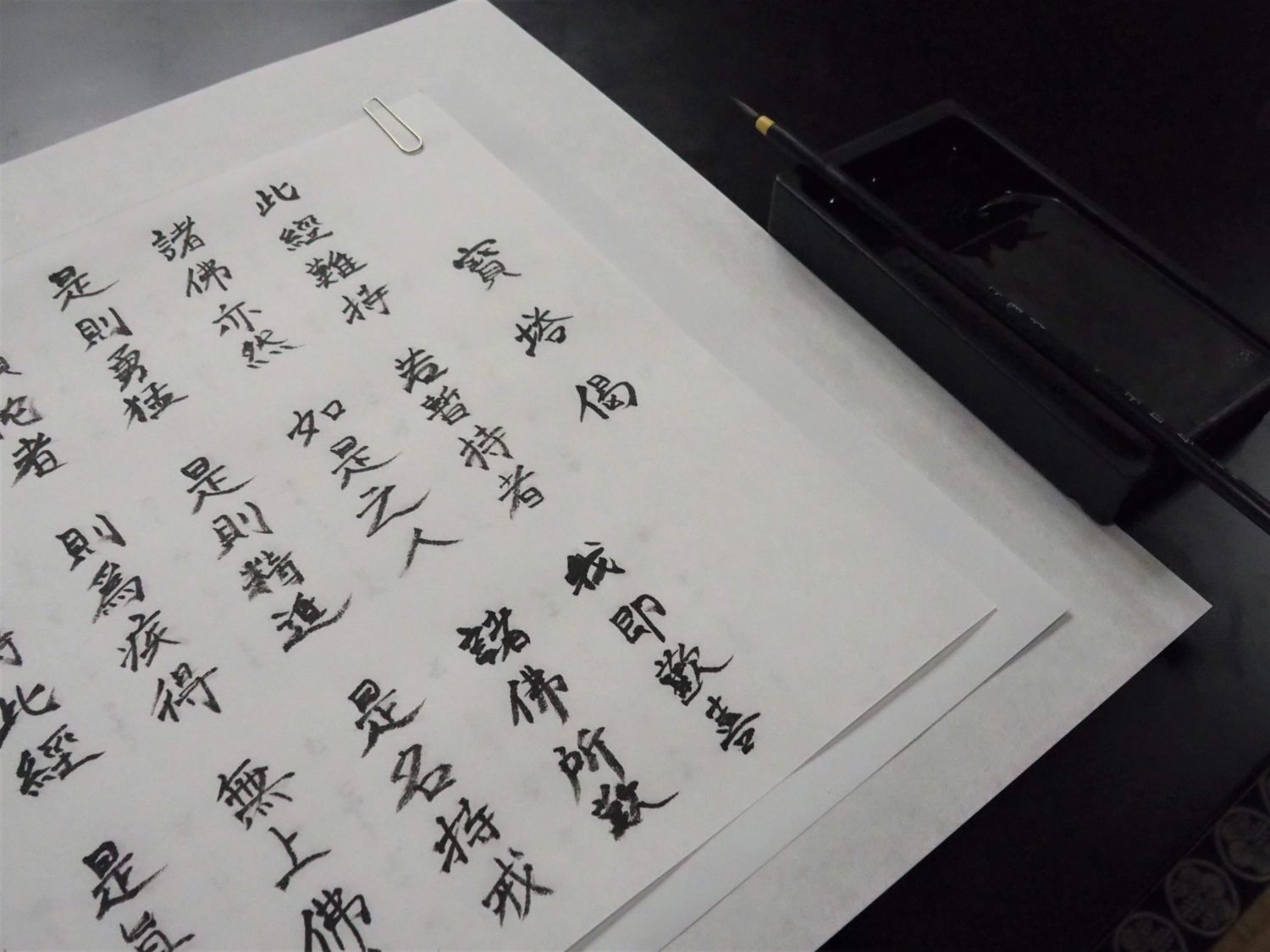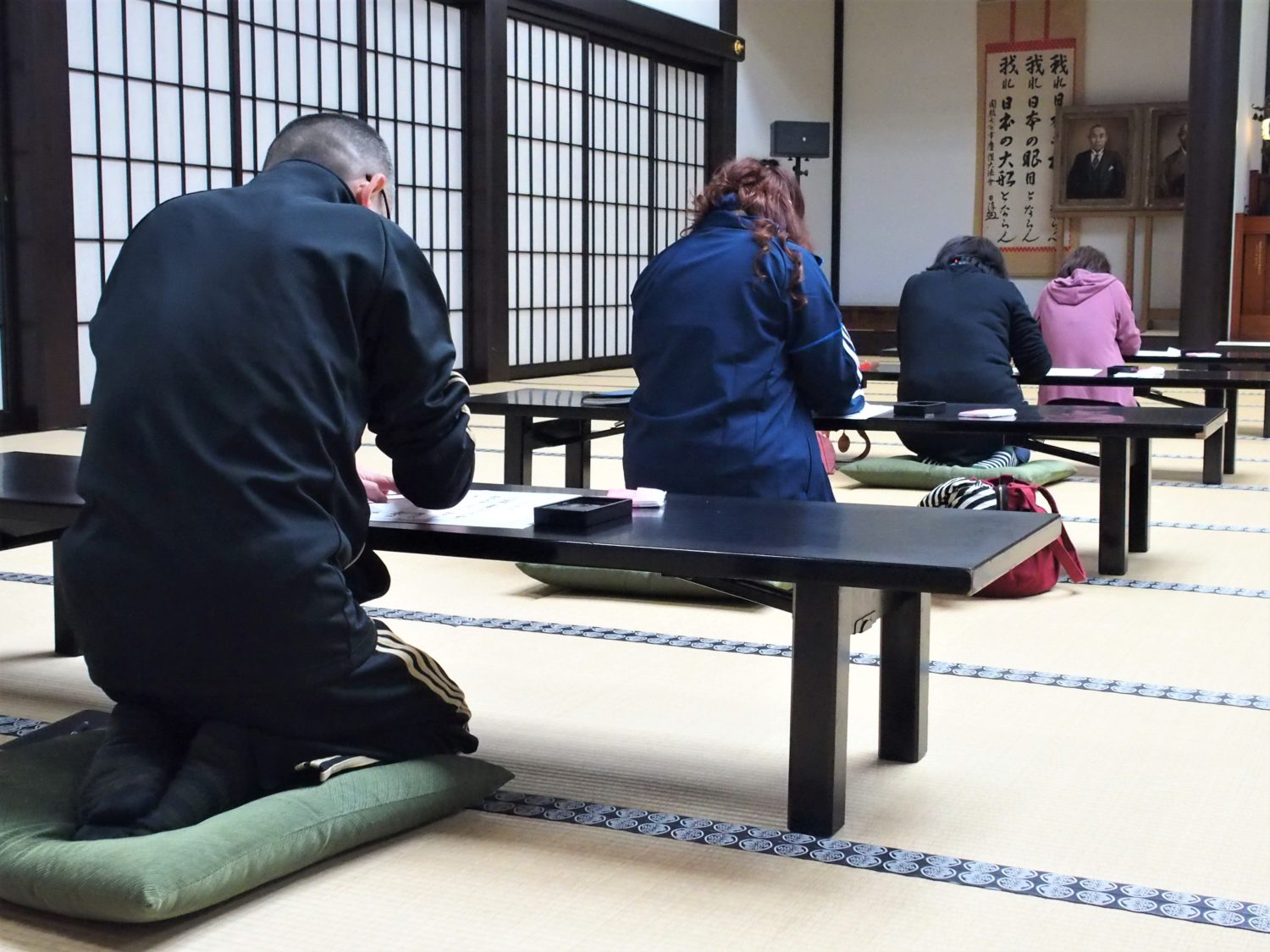Temple’s lodging facility…comfortable like a hotel
Shukubo, or temple lodgings, originally were accommodation facilities for Buddhist priests and practitioners. They now accept pilgrims and regular tourists, however, and you’ll get to spend a night in the temple grounds and watch or take part in various activities such as prayers, meditation and yoga.
After our check-in process was complete, we headed to the temple’s lodging facility. There were about 10 female participants, and we were all going to spend a night in one big room (or, what probably used to be two connecting rooms).
In the room, there were futon, yukata (simple kimono), towels and toothbrush. Shampoo, conditioner and body wash, as well as hair dryers, were available at the public baths — so, to put it simply, you can come here just like you’re going to stay at a hotel.
The lobby was spacious with tables and chairs, and there was a vending machine in the resting area.
The shukubo program was to start at 2 p.m. I suggest you take this time to change into gym clothes or outfits that allow you to move freely, as you’ll be sitting a lot in the “seiza (quiet sitting)” position, practicing yoga and so forth.
Oh, and be sure to take off your watch and anything that dangles. Also, refrain from wearing perfume. You should also leave your phone, camera and other electronic devices.
A ceremony wishing everyone a successful temple stay
At 2 p.m., we all went down to the Shin-iku Dojo training center, where we’ll spend a majority of our time over the next two days. The program began with an opening ceremony where Buddhist monks chanted to wish everyone a safe and successful temple stay.
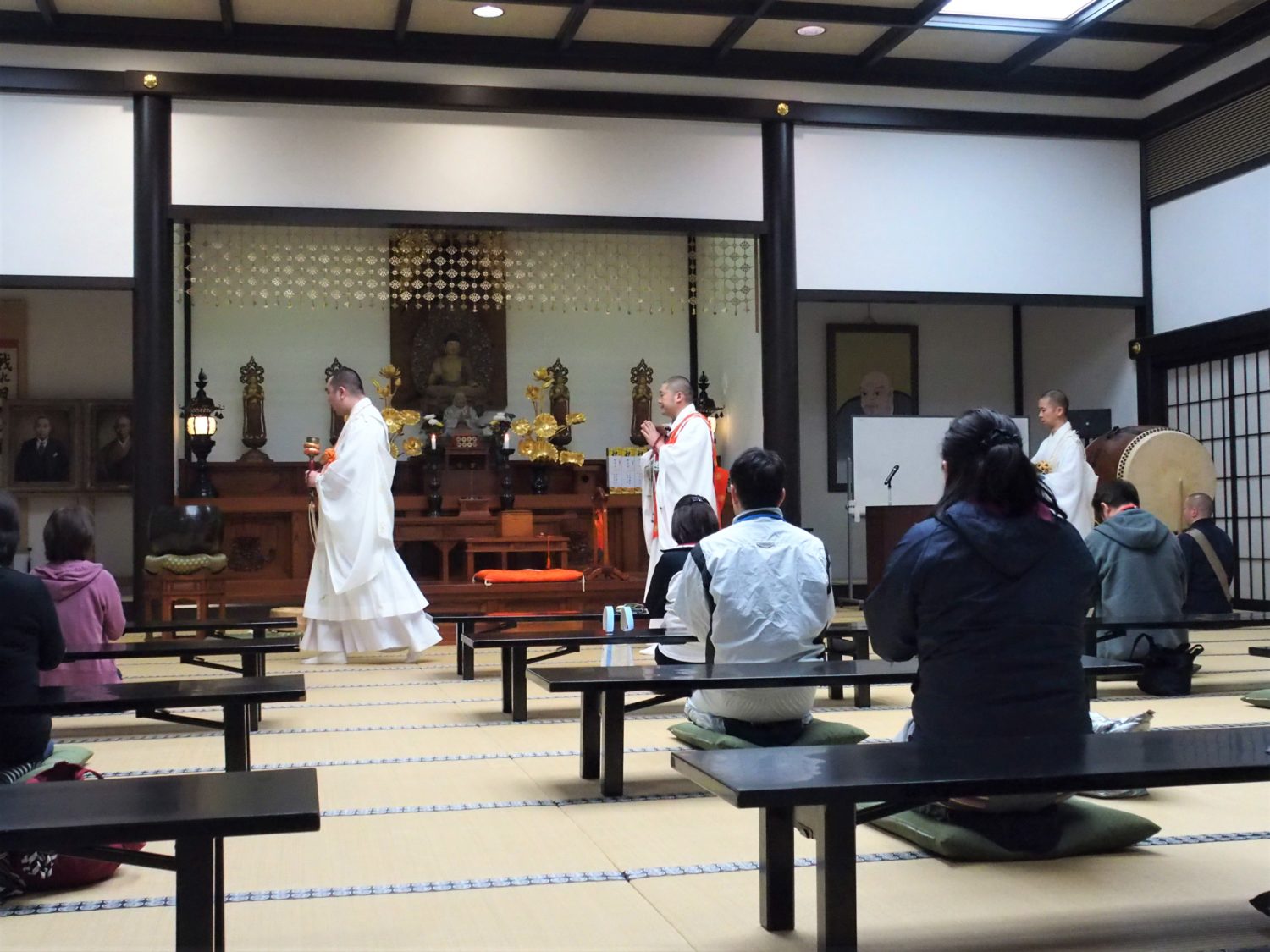
The temple stay program had 14 participants in total. After the opening ceremony was over, we were given some time to introduce ourselves to each other.
The participants had different reasons for taking part in the program — for example, one person said she decided to join to take her mind off of the worries of everyday life, while another person had just recovered from an illness and wanted to re-examine himself. But, everyone seemed to have one purpose in common: to detox their body and mind. Which, interesting enough, happens to be a subtitle of this temple stay program.
Learning seiza, gassho and other basic Buddhist practices
Having lived roughly half of my life abroad, I’ve never really had the chance to learn all the basics about Buddhism — its teachings, manners and practices. So, this part of the program was the most meaningful to me, and I spent a busy half an hour frantically taking notes.
First off, we learned how to sit seiza-style. Some of you may be surprised to hear this, but a majority of Japanese people nowadays don’t sit seiza in daily life (we use tables and chairs). We were taught to leave about a fist’s distance between knees — which helped relieve the pain tremendously.
Then, we were shown how to “gassho” correctly. This is a practice where we place the palms of our hands together in front of our chest, to show respect. This was then followed by a demonstration and training on “fukuhai,” or deep bow.
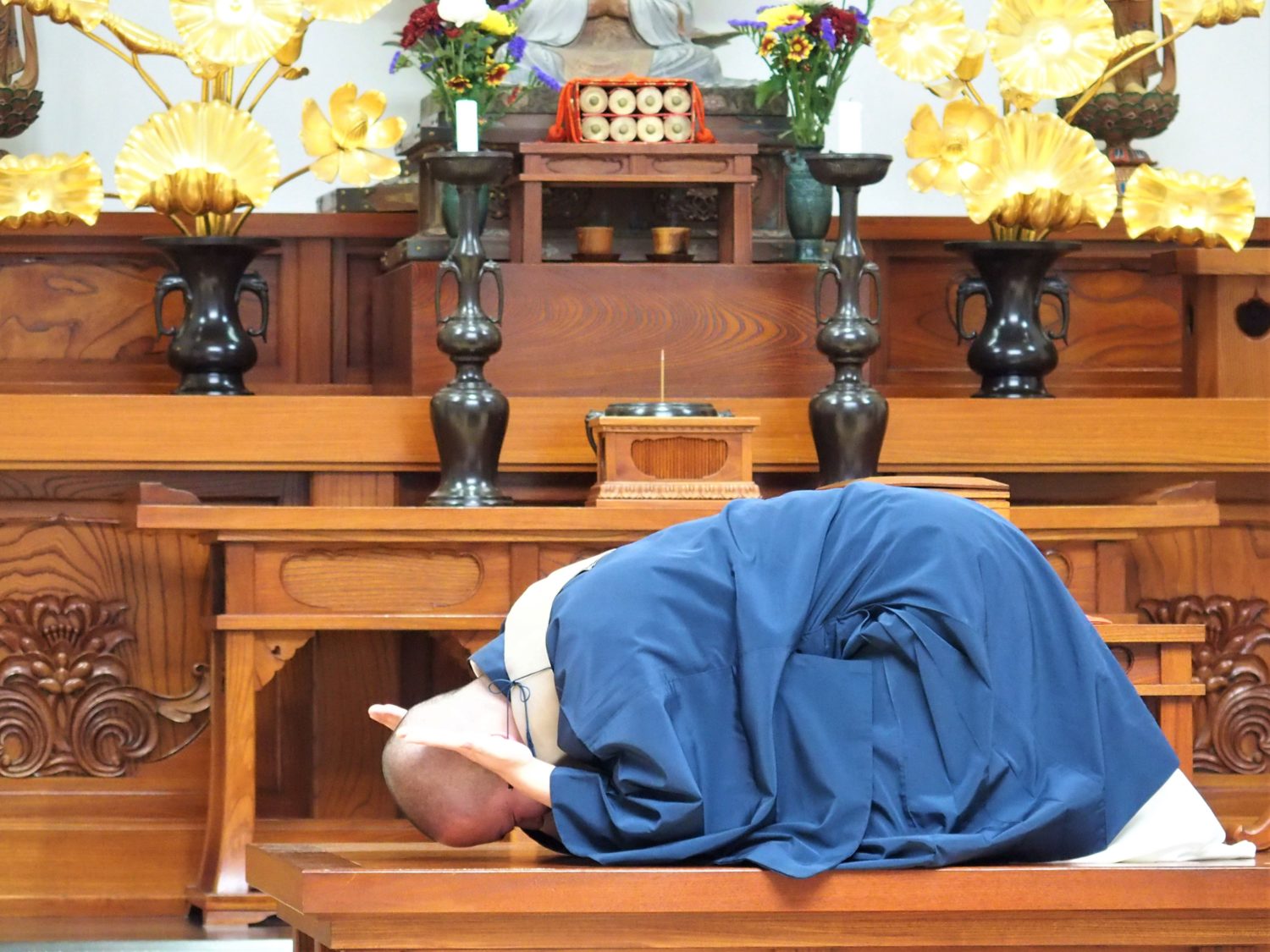
I’ve never done this before, but found it quite difficult to maintain your balance!
What I thought was interesting is that we shouldn’t step on the boundaries of tatami mats, as they’re said to represent sacred/spiritual boundaries. Also, whenever we take a step forward or walk into the temple hall, we should put our left leg first; on the other hand, when we step back or walk out of the hall, we should start off with our right leg.
Finally, we were taught how to “shoko,” or offer incense, properly.
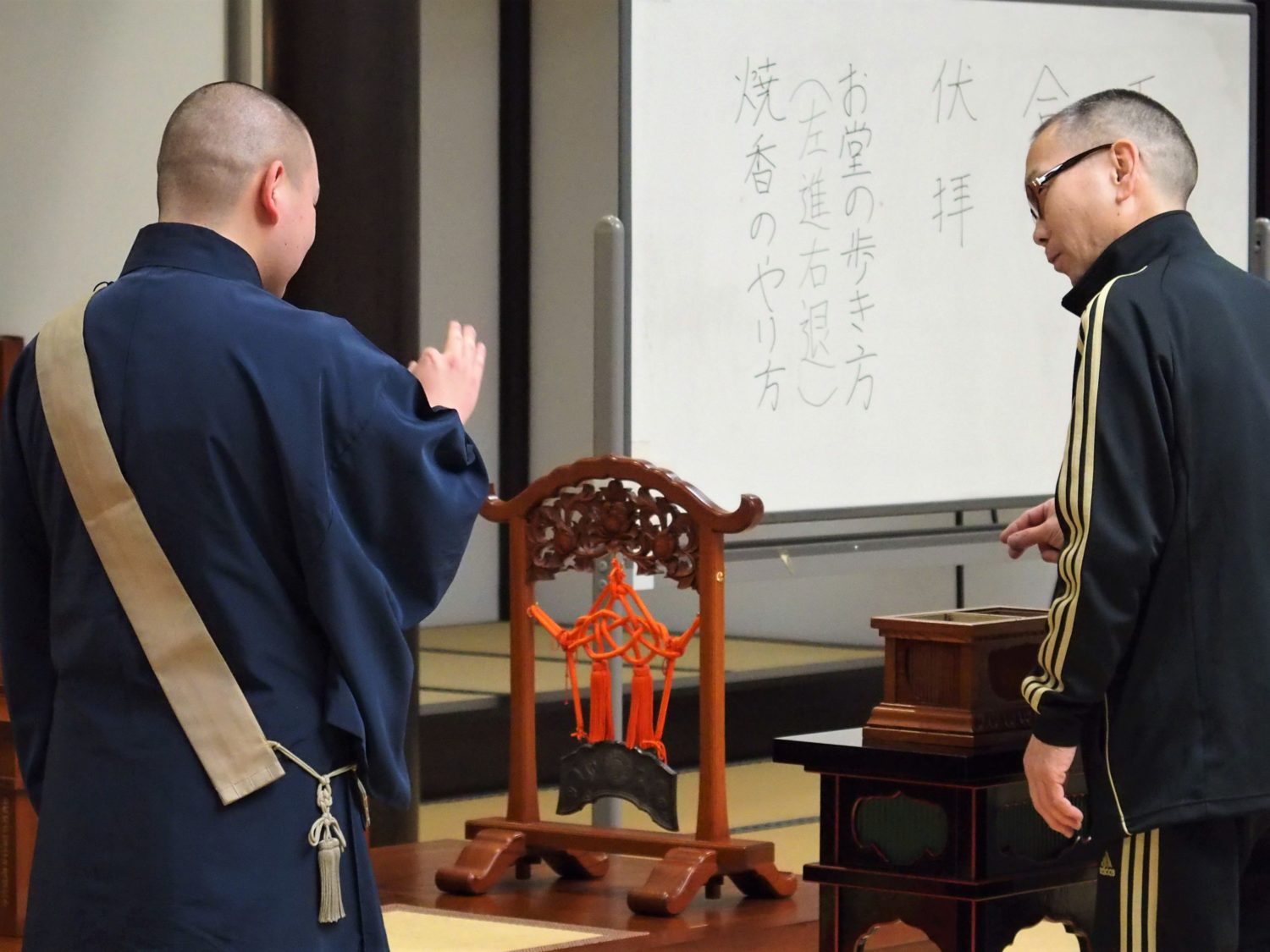
Calm your mind through “shakyo (sutra transcription)”
After a short break, we started our next activity, “shakyo (sutra transcription).” We were given a sheet of paper filled with Buddhist sutras, and another piece of thin paper to place on top. Using a calligraphy pen, we copied sutras by hand, one character at a time.
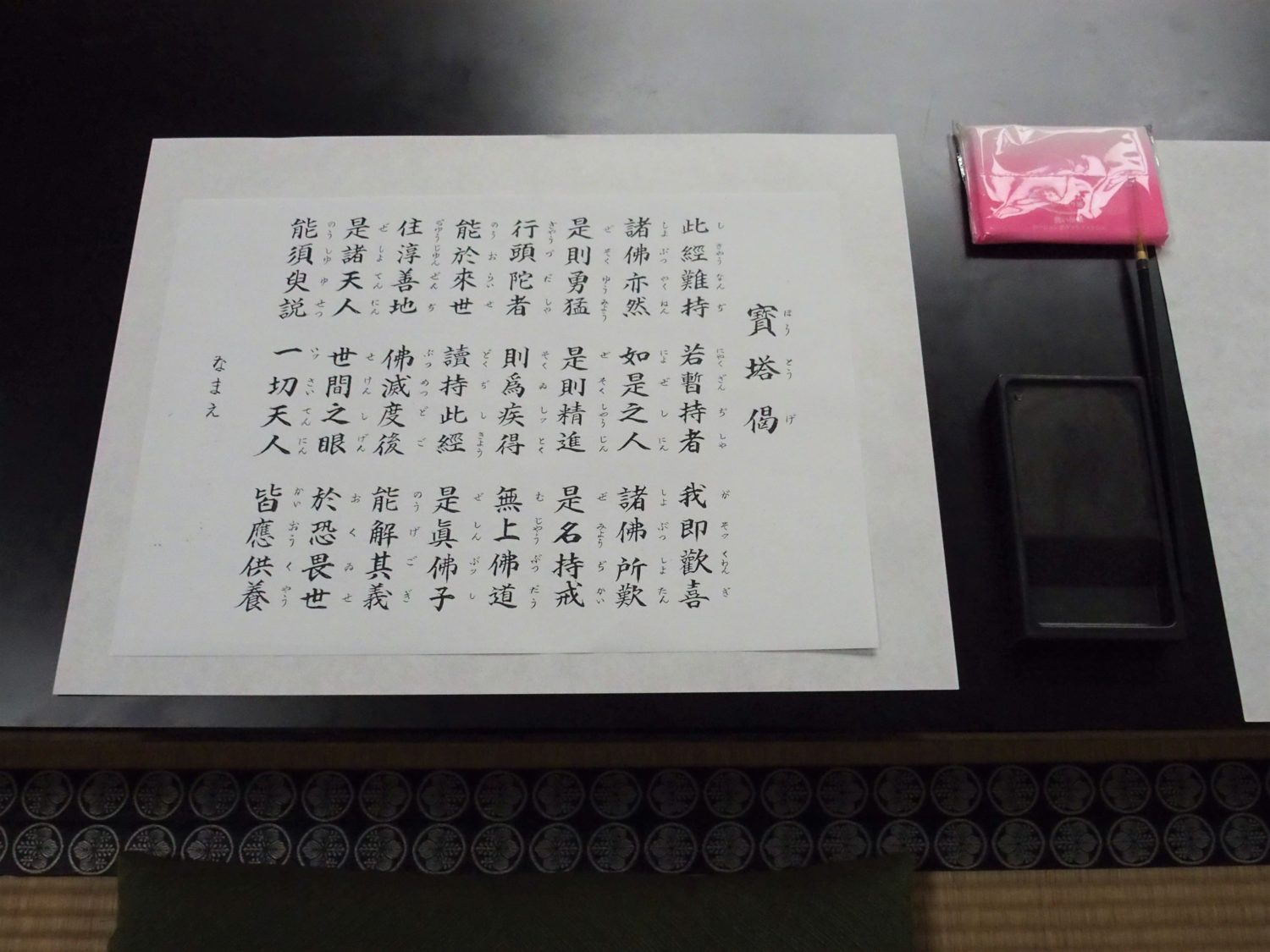
But, before starting anything, our hands were sprinkled with “zukou,” a type of incense powder made from sandalwood, cinnamon and other spices. This was meant to cleanse and purify our body.
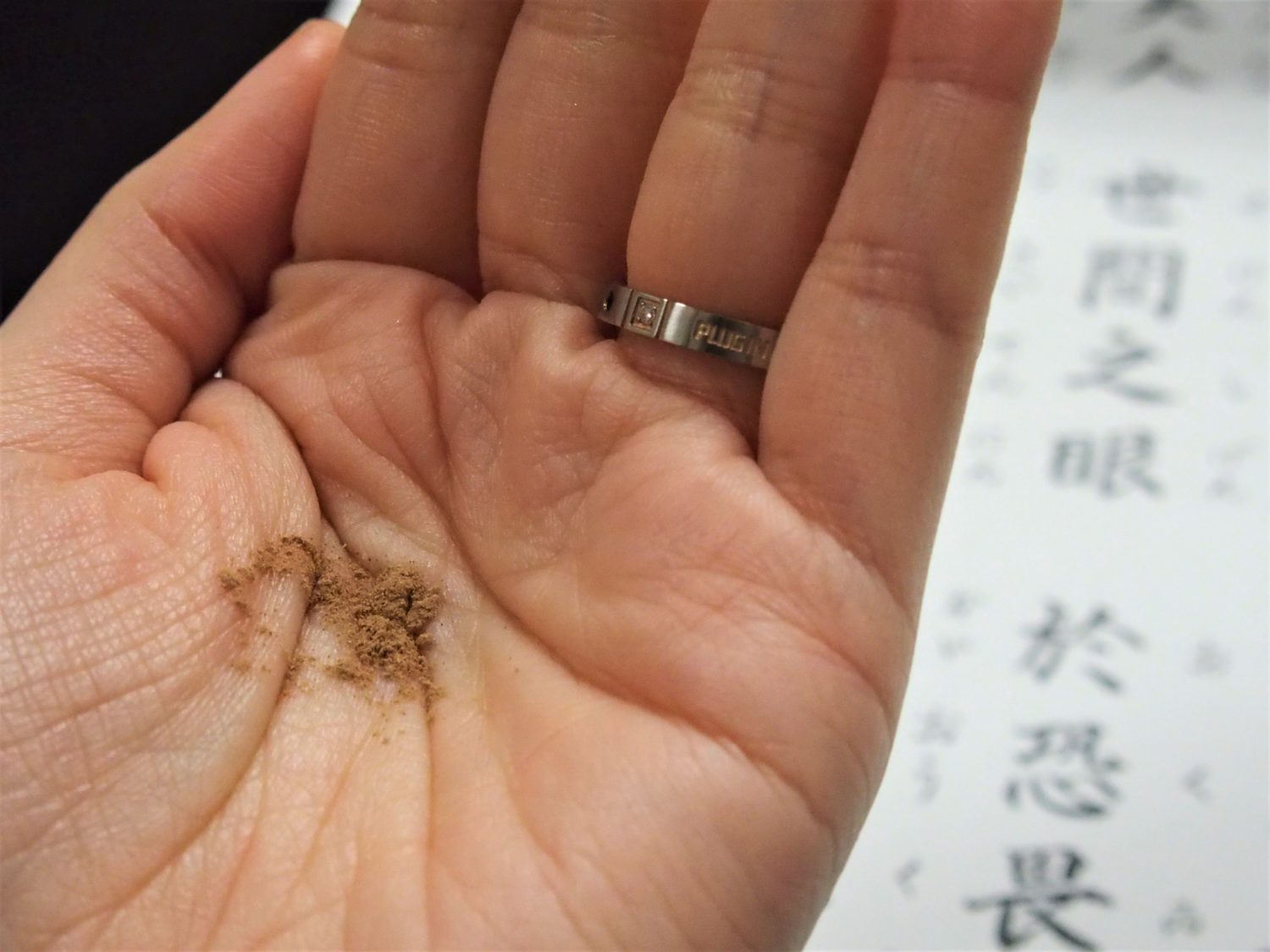
While performing shakyo, what’s important is not how beautifully you can write. It’s how concentrated and sincere you are when copying sutras down — every single character is seen as a Buddha, so you should pay a close attention to its details.
And, to prevent your breath from polluting the characters (i.e., Buddhas), we were told to fold a sheet of paper in half and hold it between our lips.
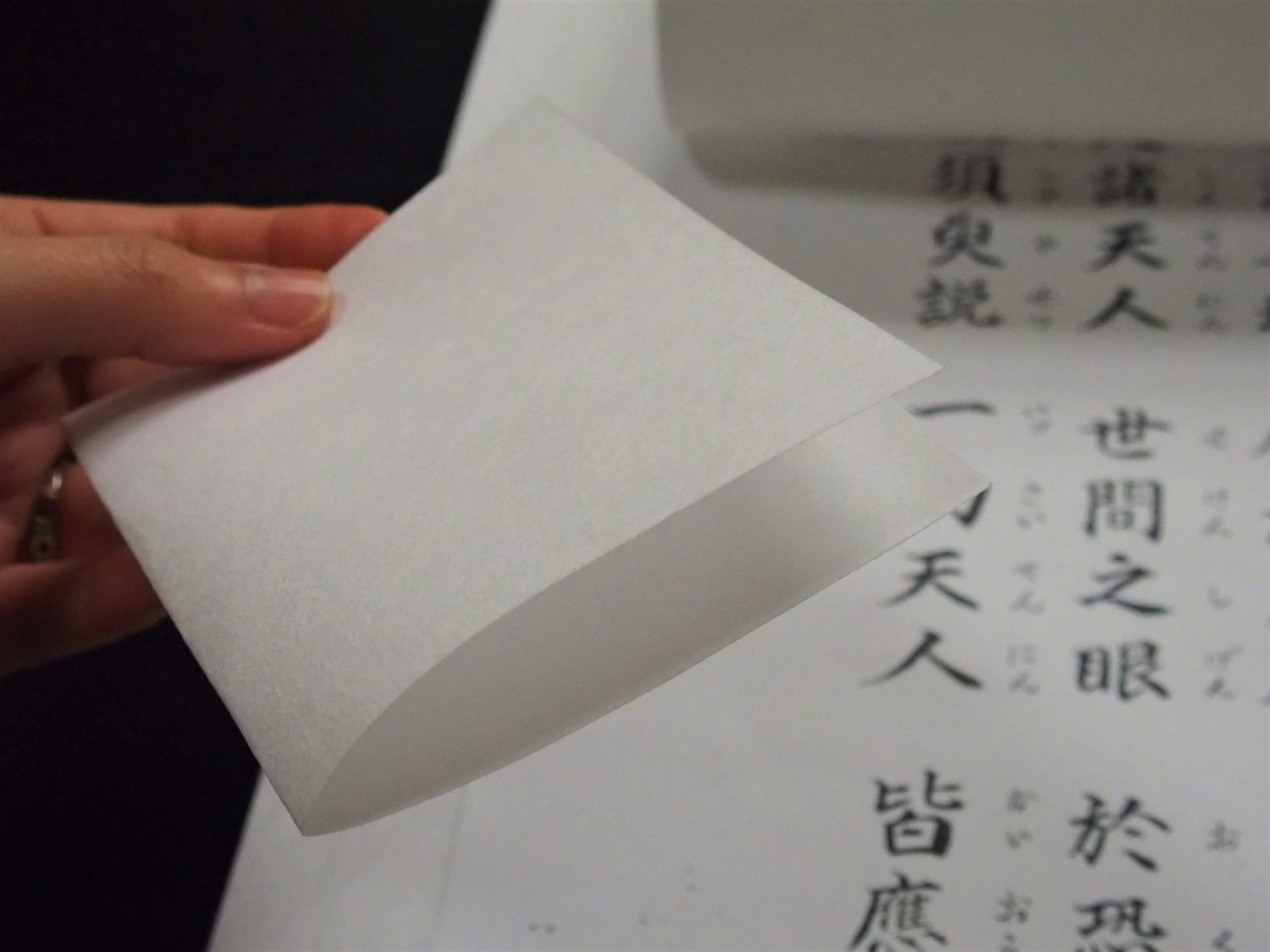
I hadn’t used a calligraphy pen since when I was in elementary school, so it was difficult to control it, especially when it came to copying complex characters. But, I reminded myself that what’s important is how sincere I am — not how good I am.
Afterward, we sat seiza-style and listened to the monks chant sutras.
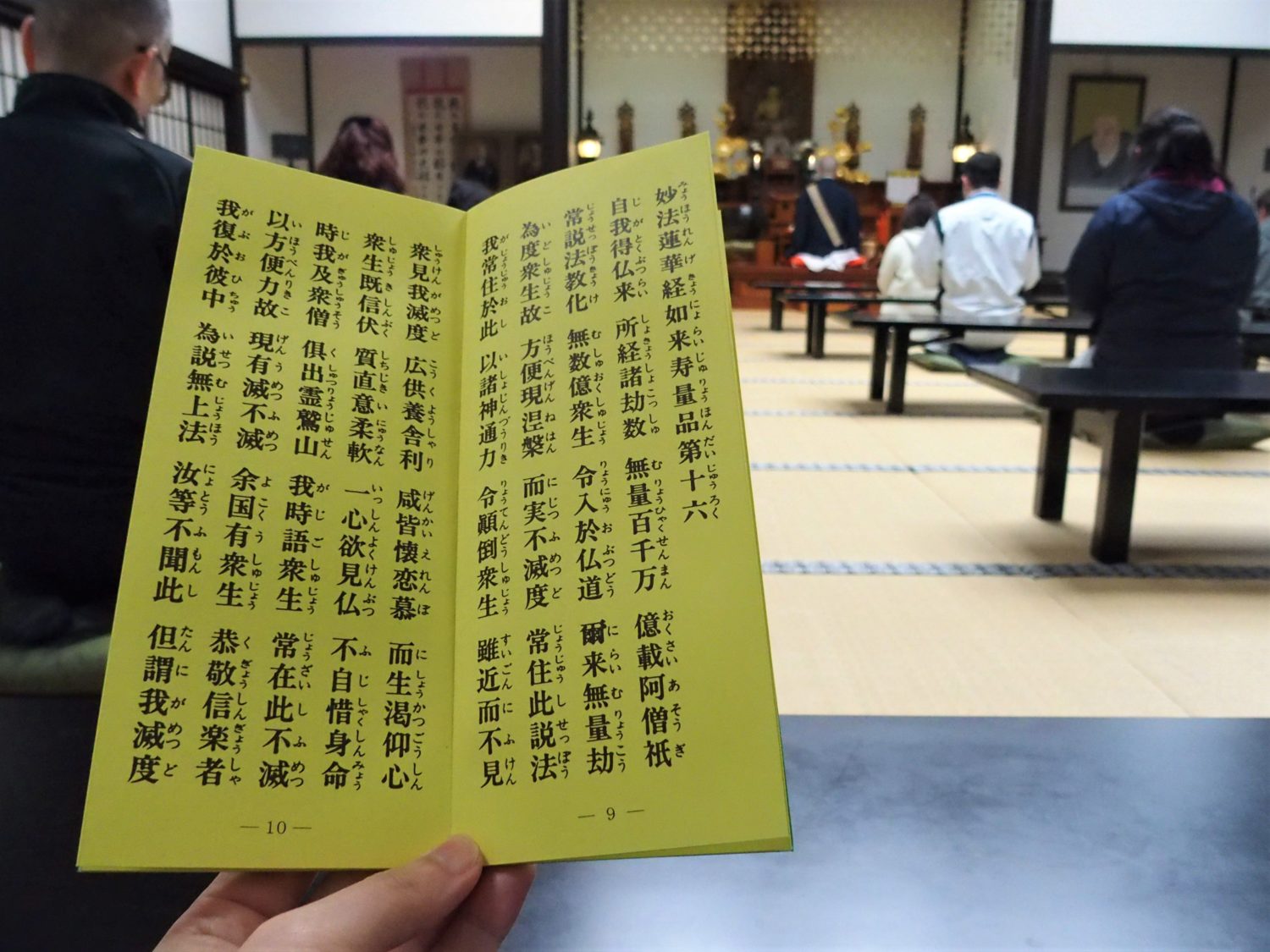
Time was now 6 p.m., and our dinner was ready!
